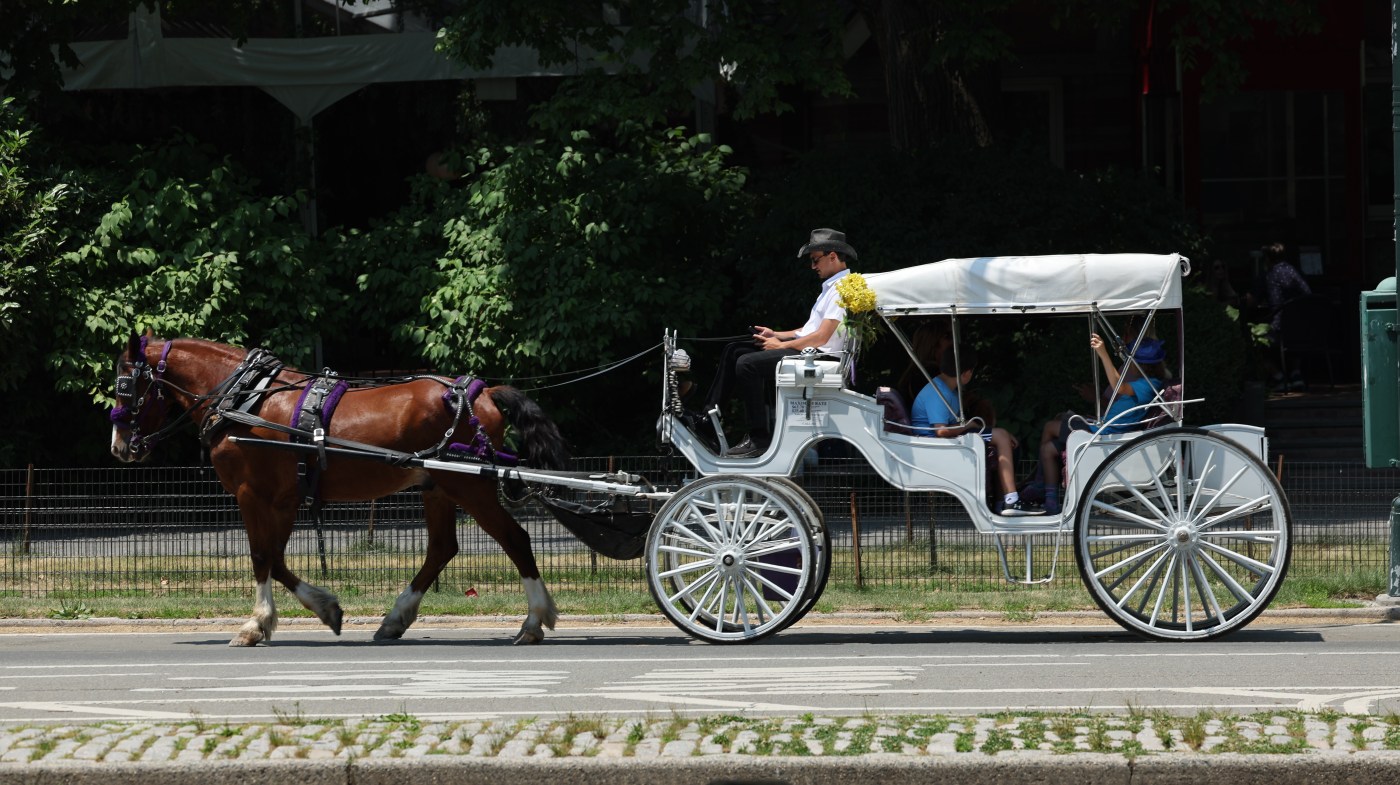Politics
New York City Moves to End Horse-Drawn Carriage Industry

New York City is taking significant steps to phase out the horse-drawn carriage industry, a practice that has been part of its cultural landscape since the Dutch introduced horses in 1625. Mayor Eric Adams announced an executive order aimed at ending this long-standing tradition, citing safety concerns and the welfare of the horses involved. With over 70% of New Yorkers supporting the ban, the administration is now calling on the City Council to pass what has been informally termed “Ryder’s Law,” named after a horse that tragically collapsed and died earlier this year.
The presence of horse-drawn carriages in Central Park has become more nostalgic than essential, leading to a growing consensus that these carriages are incompatible with modern urban life. Recent incidents have raised alarms regarding the safety risks posed by the horses. Last month, a horse bolted with no driver, causing passengers to jump from the buggy. Earlier incidents included runaway horses injuring their driver and others. Such occurrences have prompted a reevaluation of the industry’s future.
Concerns Over Safety and Animal Welfare
The decision to end the horse-drawn carriage industry aligns with a broader movement toward animal welfare and public safety. Reports of horses collapsing on city streets, such as those of Ryder and Lady, have underscored the urgent need for change. The administration has engaged with various stakeholders, including animal welfare advocates and carriage drivers, to find a solution that balances animal rights with the livelihoods of those currently employed in the industry.
Mayor Adams emphasized that while the tradition of horse-drawn carriages is revered, it must evolve. “Protecting animal welfare and public safety shouldn’t be political,” he stated. The administration plans to support current carriage drivers by identifying new employment opportunities, facilitating a voluntary return of licenses, and exploring alternatives like electric carriages. This approach aims to ensure that the transition is as smooth as possible for those affected.
Broad Support for the Ban
Both the Central Park Conservancy and major mayoral candidates have expressed support for ending the horse-drawn carriage industry. The Conservancy has called for an outright ban in Central Park, where these carriages are currently permitted. This rare alignment among political figures highlights the growing recognition of the dangers posed by the carriages, with documented incidents further fueling the call for reform.
Despite criticism from the Transport Workers Union Local 100, which claims the ban betrays working-class New Yorkers, the administration remains firm in its position. Union leaders have alleged that the proposed changes are influenced by affluent interests, yet no evidence has substantiated these claims. Community advocates and public safety leaders have voiced strong support for the ban, citing the clear risks associated with horse-drawn carriages.
As New York City moves to phase out this long-standing practice, the emphasis remains on ensuring the welfare of both the horses and the public. The administration argues that this decision is not merely about tradition but about aligning with contemporary values surrounding animal rights and urban safety.
The first horse-drawn carriage took to the streets of New York 400 years ago. As the city evolves, it is now poised to conclude this chapter of its history for the benefit of its residents and the animals involved. The proposed ban reflects a shift towards a more modern, safe, and ethical approach to urban transportation and tourism.
-

 Science1 week ago
Science1 week agoResearchers Challenge 200-Year-Old Physics Principle with Atomic Engines
-

 Politics1 week ago
Politics1 week agoNHP Foundation Secures Land for 158 Affordable Apartments in Denver
-

 Health1 week ago
Health1 week agoNeuroscientist Advocates for Flag Football Until Age 14
-

 Lifestyle1 week ago
Lifestyle1 week agoLongtime Friends Face Heartbreak After Loss and Isolation
-

 Health1 week ago
Health1 week agoFDA Launches Fast-Track Review for Nine Innovative Therapies
-

 World1 week ago
World1 week agoTroops to Enjoy Buffalo Chicken, Thai Curry in 2026 MREs
-

 Business1 week ago
Business1 week agoMaine Housing Inventory Surges to Post-Pandemic High
-

 World1 week ago
World1 week agoGlobal Military Spending: Air Forces Ranked by Budget and Capability
-

 Politics1 week ago
Politics1 week agoIsraeli Air Strikes in Lebanon Kill One, Wound Seven Amid Tensions
-

 Politics1 week ago
Politics1 week agoMassachusetts Lawmakers Resist Audit After Voter Mandate
-

 Top Stories1 week ago
Top Stories1 week agoUnforgettable Moments: The Best Victoria’s Secret Performances
-

 Business1 week ago
Business1 week agoSpirit Airlines Cuts Workforce with Furloughs for 365 Pilots









